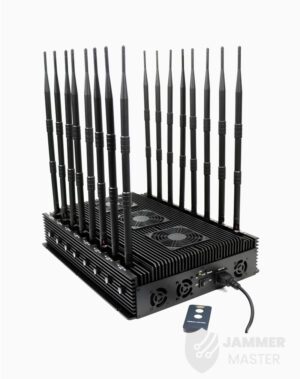
How to Build a GPS Jammer at Your Home
Here’s a step by step guide on how to build your own GPS jammer. Below are the main steps we are going to introduce in

In order to ensure a focused learning environment and maintain classroom discipline, some schools have resorted to installing signal jamming devices. These professional devices are capable of blocking signals from all three major mobile network operators, as well as Wi-Fi and Bluetooth signals. However, with the advent of 5G technology, it is crucial to upgrade these devices to effectively block the latest generation of signals. This article explores the significance of signal jamming devices in preventing students from using mobile phones during class and the challenges associated with blocking 5G signals.

Mobile Phone Jammer JM020 Block Phone/GPS/LoJack/Walkie-Talkie
$520.00
Desktop 5G Cellular Signal Jammer Block Cellular/Wireless/GPS/LoJack JM006
$1,839.99
Portable Jamming Device Disrupt Cellular/GPS/WiFi/RF JM009
$739.99
Desktop All-in-One Signal Jammer Block Full Band Cellular/WiFi/GPS/LOJACK JM014
$899.00To combat the issue of students not paying attention in class and bringing mobile phones, schools have turned to signal jamming devices. These devices effectively block signals from mobile network operators, Wi-Fi, and Bluetooth, ensuring that students remain focused on their studies. By eliminating distractions caused by mobile phones, these devices play a vital role in maintaining classroom discipline.
With the widespread adoption of 5G technology, signal jamming devices have also evolved to include 5G interference modules. This upgrade allows these devices to effectively block 5G signals, ensuring that students are unable to use their mobile phones during class. By keeping up with technological advancements, signal jamming devices continue to serve their purpose in maintaining a distraction-free learning environment.
Despite the availability of signal jamming devices equipped with 5G interference modules, there are instances where these devices may fail to block 5G signals. This issue primarily arises due to variations in signal strength within different locations. Factors such as the presence of nearby base stations or environmental differences can significantly impact the effectiveness of signal blocking. In such cases, it is advisable to contact the device manufacturer for an upgrade to ensure compatibility with 5G signals.
Signal jamming devices have become an essential tool in preventing students from using mobile phones during class, thereby maintaining classroom discipline. With the inclusion of 5G interference modules, these devices have adapted to the latest technological advancements. However, challenges may arise in blocking 5G signals due to variations in signal strength and environmental factors. It is crucial for schools to stay updated and ensure their signal jamming devices are compatible with 5G signals to effectively address the issue of mobile phone usage during class.
Our frequency checker tool will help you check all frequency bands used in all country.

Here’s a step by step guide on how to build your own GPS jammer. Below are the main steps we are going to introduce in

In today’s digital age, our lives are more connected than ever before. We rely on our smartphones for communication, entertainment, and information. However, with this

Signal jammers are devices that deliberately transmit signals on the same frequencies as telecommunications and GPS devices, such as mobile phones, GPS trackers, and even

Understanding Signal Blocker: How It Works and Its Applications Signal Blockers are devices that can disrupt mobile phone signals, preventing them from connecting to base

The Application and Benefits of High-Power Signal Jammers Enhancing Signal Blocking Efficiency in Various Environments In today’s technologically advanced world, the need for effective signal

Considerations for Purchasing Exam Room Signal Jammers Ensuring Effective Signal Jamming for Exam Integrity As the year approaches its end, many schools are preparing for

The Importance of Monitoring and Signal Interference Measures During Examinations During examination periods, it is crucial to closely monitor the examination venues and their surrounding

Selecting the Appropriate Cell Phone Jammer for Theaters and Auditoriums Overcoming Challenges in Installation and Maximizing Signal Disruption The Importance of Cell Phone Jamming in

Remote Control of Cell Phone Jammers via Smartphone: A Possibility? With the rapid development of the Internet of Things (IoT), numerous smart home devices have

Supplying high quality signal jamming devices since 2010. The only jammer store you can trust.
Jammer Master © 2024. Premium Signal Jammer Supplier Since 2010.